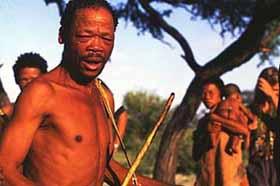Culture as collective character or pattern
1. Intellectual background
1.1. Cultural relativism (Franz Boas)
1.2. Psychoanalysis: Freudian theory
-Early phase of personal growth is important to maturity of individual
-The early stage of personal growth is particularly characterized by libido
-Oral stage-->anal stage-phallic stage-->Oedipus complex
-Cultural critique of psychoanalysis
1.3. Gestalt psychology
- Thinking and problem solving are characterized by appropriate substantive organization, restructuring, and centering of the given ('insight') in the direction of the desired solution.
- In memory, structures based on associative connections are elaborated and differentiated according to a tendency for optimal organization.
- Cognitions which an individual cannot integrate lead to an experience of dissonance and to cognitive processes directed at reducing this dissonance.
- In a supra-individual whole such as a group, there is a tendency toward specific relationships in the interaction of strengths and needs.
Source: Society for Gestalt Theory
1.4. Cognitive anthropology: theory of cultural schemata
-Cognition is derived from association
-The schemata in our mind are formed and hardened in the process of socialization
-Cognitive elements become associated with emotion and motivation
-Example: "Mother goes with food and father goes with job/money"
2. From cultural traits to cultural pattern
2.1. Early anthropologists were obsessed with collecting cultural traits as "butterfly collection"
"awakens in a bed built on a pattern which originated in the Near East but which was modified in northern Europe before it was transmitted to America. He throws back covers made from cotton, domesticated in India, or linen, domesticated in the Near East, or silk, the use of which was discovered in China. All of these materials have been spun and woven by processes invented in the Near East...He takes off his pajamas, a garment invented in India, and washes with soap invented by the ancient Gauls. He then shaves, a masochistic rite which seems to have derived from either Sumer or ancient Egypt. Before going out for breakfast he glances through the window, made of glass invented in Egypt, and if it is raining puts on overshoes made of rubber discovered by Central American Indians and takes an umbrella, invented in southeastern Asia...On his way to breakfast he stops to buy a paper paying for it with coins, an ancient Lydian invention...His plate is made of form of pottery invented in China. His knife is of steel, an alloy first made in southern India, his fork a medieval Italian invention, and his spoon a derivative of a Roman original...After his fruit (African watermelon) and first coffee (an Abyssinian plant)...he may have the egg of a species of bird domesticated in Indo-China, or thin strips of flesh of an animal domesticated in Eastern Asia which have been salted and smoked by a process developed in Northern Europe... While smoking (an American Indian habit) he reads the new of the day, imprinted in characters invented by the ancient Semites upon a material invented in China by a process invented in Germany. As he absorbs the accounts of foreign troubles, he will, if he is a good conservative citizen, thank a Hebrew deity in an Indo-European language that he is 100 percent American." (Ralph Linton)
 2.2. Ruth Benedict: What is the relationship between individual and cultural traits? (Patterns of Culture)
2.2. Ruth Benedict: What is the relationship between individual and cultural traits? (Patterns of Culture)2.3. Human beings have, possess and control cultures
2.4. Cultures have, possess and control human beings
2.5. Personality:
-People participate in culture through perceptions, conceptions, values, beliefs, and attitudes
Personality "is a more or less enduring organization of forces within the individual associated with a complex of fairly consistent attitutdes, values, and modes of perception which account in part for the individual's consistency of behavior." (Barnouw 1985)
Barnouw, V. 1985. Culture and Personality, 4th ed. Homewood, IL: Dorsey Press.
2.6. Example I: The Kwakiutl and The Zuni
2.6.1. The Kwakiutl:
-Foragers inhabiting a rich environment and organized as chiefdom
-Dionysian: Striving to escape limitations, achieve excess and adventurous
2.6.2. The Zuni:
-Agriculturalist living in established village
-Apollonian: Noncompetitive, gentle and peace-loving
2.7. Example II: Preschool education
-Values and ranking of values
-Mode of interaction
-
 3. National character
3. National character3.1. Example I: Ruth Benedict's The Chrysenthemum and the Sword (菊花與劍/刀 1946)
-Historical background: the Second World War
-The duality of Japanese character: elegance and delicacy (chrysanthemum) vs. cruelty and discipline
-The importance of hierarchy in Japanese thinking
-Two kinds of obligations or "debt": gimu (義務) and giri(義理)
-Culture of shame
-Learning and Cultivation
Ryang, Sonia. 2002. Chrysanthemum's strange life: Ruth Benedict in Postwar Japan. Asian Anthropology vol. 1, 87-116.
Åke Daun. 1998. "Describing a National Culture - is it at all Possible?" Ethnologia Scandinavica, Vol. 28, p. 5-19.
3.2. Example II: The Subject of "Chinese culture" in Hong Kong
4. Personality and social institutions
4.1. Example I: The (Sub)culture of poverty (Oscar Lewis)
4.1.1. Oscar Lewis conducted fieldwork in Latin America
4.1.2. The poor is characterized by low income, unemployment, unskilled occupation, little saving, ... ...
4.1.3. The culture of poverty is marked by a set of values and feelings:
-Marginality
-Insecurity
-Fatalism
-Desperation
-Aggression
-Distrust of government
4.1.4. Culture of poverty, capitalism and class politics
-The poor is economically and politically disempowered by modern capitalism
-Participation in trade union and political party empowers the poor to get out of the culture of poverty
5. Critique of the paradigm of "collective character"
5.1. Overgeneralization of particular cultural traits and ignoring internal variations
5.2. De-historicization and de-contextualization
5.3. Ethnocentrism
-Culture=Collective character=individual personality?
-Individual is assumed to be an independent container of psychological characteristics or dynamics-- a psychological assumption
Reading for next week
"Statement on Race" by American Anthropological Association







